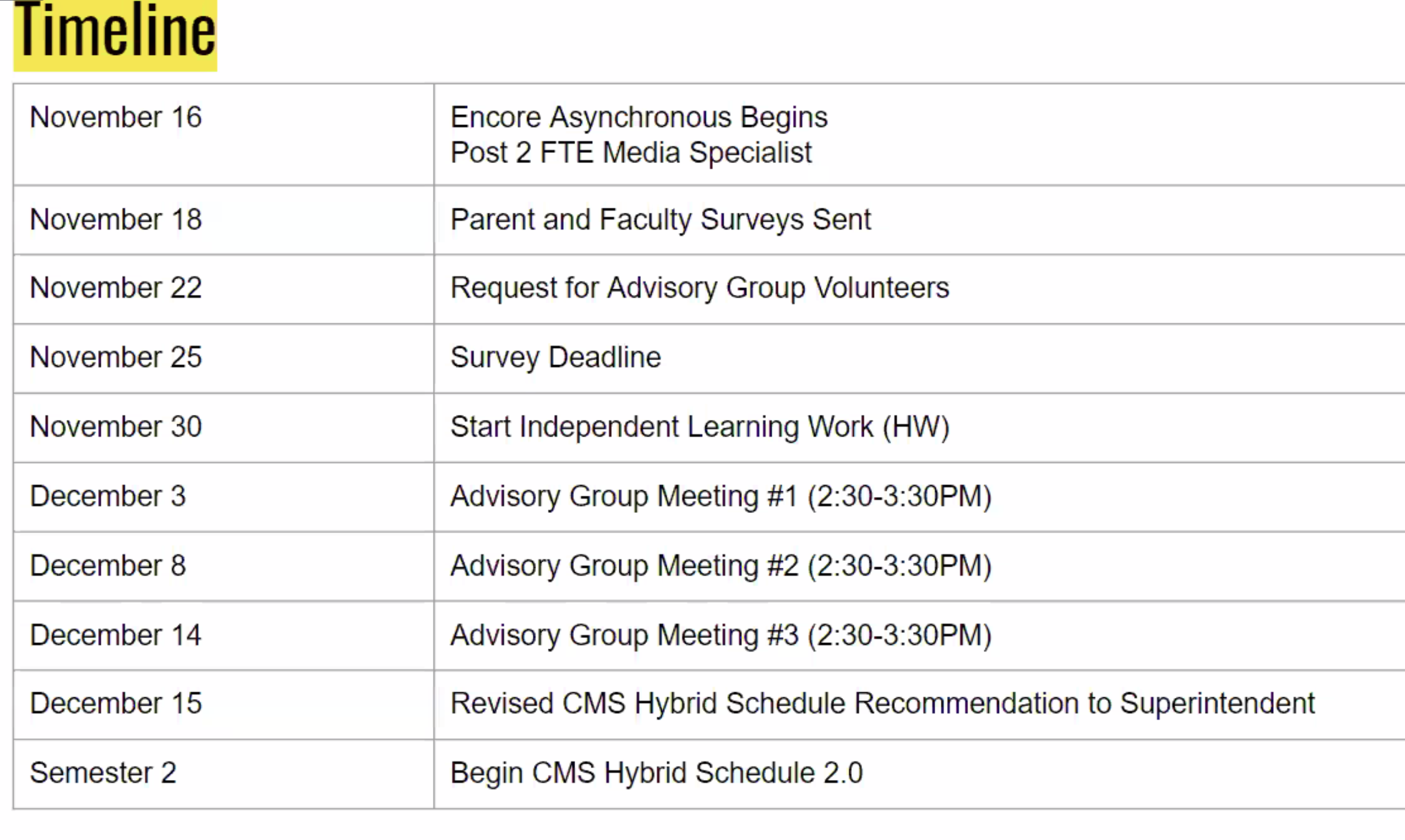Photo:
The selection of a new Belmont High School hybrid plan came down to what to do with lunch.
After being presented a pair of proposals to remedy issues facing the original hybrid blueprint, the Belmont School Committee voted on Tuesday, Nov. 17 to recommend a jury-rigged plan in which students will attend class in the High School building two half days a week while spending the majority of their days learning with their peers via live streaming video.
The plan will need the approval of the district’s teacher’s union, the Belmont Education Association, as online instruction requires the union’s OK through the collective bargaining process.
The plan is scheduled to going into effect during the week of Nov. 30.
The new plan appears to accomplish what a majority of parents have been advocating since the inaugural hybrid plan was announced in August: a hefty amount of instructional time. Originally slated at 95 minutes, the Hybrid Plan 2.0 will provide 170 minutes a week of instructional time, a reduction of just 10 minutes per week from the current remote plan.
The approved plan was the culmination of a three weeks sprint by a seven-person task force cobbled together after the School Committee rescinded an earlier vote to begin the original blueprint in early October.
“I think we are at the stage here where we are developing a hybrid model that will … to get high school students back into school,” said Belmont High School Principal Issacs Taylor who led the task force.
After reviewing students, educators and parents’ feedback from three surveys and 11 plans from surrounding districts – Lexington, Newton, Wellesley, and Concord to name a few – the group settled on two concepts which checked off many of the boxes the task force set for itself. These included “non-negotiables” such as maximizing instructional time, a balance on in-person and remote learning so all students would have the same classroom experience, as well as ensuring students would remain with their same teachers and classes as they have in remote sessions.
Both options would open and close at the same time for students: 8 a.m. to 2:25 p.m. One of two equally numbered student cohorts would spend two days “at school” – either Monday and Tuesday or Thursday and Friday – during in-class instruction while their counterparts would be following the lesson from home. The big difference from the current remote plan is that all students will learn the same lessons in real-time via live streaming.
The first option was a more traditional in-class school day with two 75 minute periods before and after a 50-minute lunch break taken in their homeroom.
A number of parents who attended the Zoom-meeting were impressed with option one where students attended two complete days in classrooms while having lunch in the building.
The second option squeezes the four 55 minute classes into a morning session. A 55-minute “lunch” break is used for the in-class students to head back home to begin the second round of lessons in the same classes they took that morning, this time in 20-minute blocks.
When questioned on separating a daily class into 55 minute and 20-minute segments, Taylor said “the morning session is that opportunity for the teachers to introduce topics and students to digest them … and then that afternoon session is a way of pulling things together.”
But it wasn’t how subjects were going to be taught but rather the logistics of attempting to serve lunch to 750 students and health risks that encompasses in Option One that turned out to be a “no go” for the task force and educators who expressed discomfort in their survey response being in classrooms for four days.
“In order to have lunch for everyone in school, I believe the health metrics would have to fundamentally change based on the space that we have in the high school,” said Taylor. Since the field house is being used as classrooms, “we don’t have the capacity in the school building to have lunch outside of the homerooms and I don’t believe that is the most effective and safest way of having lunch.”
Having settled on a hybrid plan 2.0 will not result in the task force shutting down, said Taylor. It will continue as “this is just the first step” how the district will move learning forward in this pandemic.”








acc to the local news with Joanna, you said that the lunch program was a hindrance in students going full day ergo the two bizarre plans. Still unclear which is in place but the obvious thing to me is : there is no need for a lunch program/open cafeteria and workers. The students can eat at their desk or assigned tables just like the olden days. There is no excuse for sending them home for a tad more education since you know no one will checking in.
This works just fine for the full day programs in Boxborough. Interested in your response/clarification.